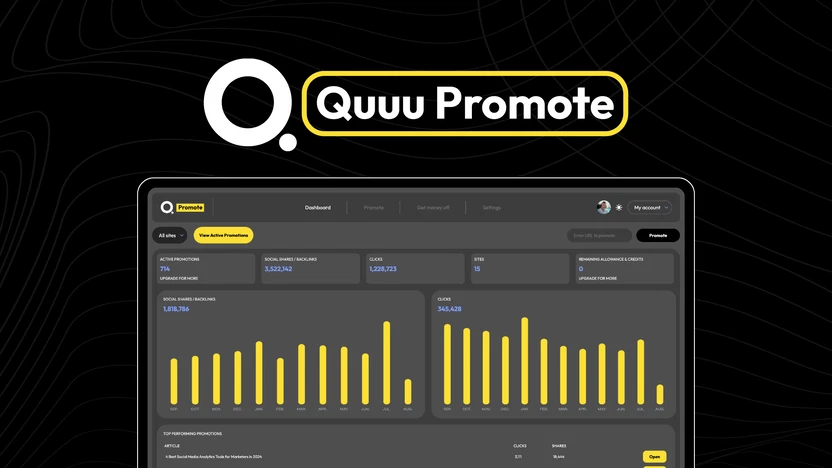In the dynamic world of digital marketing, expanding your reach and enhancing your brand’s visibility is paramount.
Blog syndication, a strategy where your content is republished on third-party websites, offers a direct and knowledgeable approach to achieving these goals.
At VH-info, we understand the intricacies of SaaS link building and how blog syndication can be a game-changer for your content marketing strategy. Let’s talk about what blog syndication involves, its benefits, and how you can use it effectively.
What is Blog Syndication?

Blog syndication is the practice of republishing your existing blog post or original article on third-party websites.
This content distribution technique allows you to extend the reach of your content to a wider audience, drive referral traffic back to your own site, and improve your search engine optimization (SEO).
Instead of creating new content for various platforms, you use your existing content to maximize its impact.
Benefits Of Blog Syndication

Content syndication offers many advantages for SaaS companies looking to grow their online presence.
- Increased Visibility: Republishing your blog content on various platforms exposes your brand to new audiences who might not have otherwise discovered your website. This increased visibility can lead to greater brand awareness and recognition within your industry.
- Improved SEO: When syndicated content includes a link back to the original source, it creates valuable backlinks that search engines use to assess your website’s authority and trustworthiness. These backlinks can improve your search rankings and drive more organic traffic to your site. It is a great way to improve your domain rating.
- Expanded Audience Reach: Blog syndication allows you to tap into the existing audiences of your syndication partners, exposing your content to potential customers who are already interested in your niche. This expanded reach can significantly increase your website traffic and generate new leads.
- More Traffic: Ultimately, the goal of blog syndication is to drive more referral traffic back to your own website. Including relevant links and calls to action (CTAs) in your syndicated content can encourage readers to visit your site, explore your product offerings, and engage with your brand.
How Does Blog Syndication Work?

Blog syndication involves republishing your blog content on other websites, either in its entirety or as a snippet with a link back to the original post on your own site.
This can be done through various methods, including:
- Manual Syndication: Directly contacting other websites or publications and offering them your content for republication.
- Automated Syndication: Using RSS feeds or content syndication platforms to automatically distribute your content to participating websites.
- Paid Syndication: Paying a content syndication network to distribute your content across its network of websites.
How To Syndicate Content?

Syndicating content effectively requires a strategic approach to maximize its benefits while minimizing potential risks.
Create Syndication-Worthy Content
To effectively syndicate your content, start by creating high-quality, valuable content that resonates with your target audience.
This content should be well-researched, informative, and engaging, addressing the pain points of your potential customers.
It’s not just about creating any content; it’s about creating pieces that are worth sharing. Your blog post or original article should be a great piece of content that can stand on its own, providing insights or solutions that are relevant to your industry.
This ensures that when you syndicate it, it will attract attention and drive referral traffic back to your site.
Identify Syndication Partners
Finding the right syndication partners is important for successful content distribution.
Look for websites, blogs, or publications that cater to your target audience and have a strong reputation within your industry. These partners should have a similar audience and authority level to your blog, ensuring that your content reaches the right audience.
Building relationships with these partners can lead to long-term content syndication opportunities, enhancing your brand visibility and potentially generating new leads.
Choose The Right Syndication Channels

Selecting the appropriate syndication channels is key to reaching a broader audience:
Free Syndication
Free syndication involves republishing your content on platforms like Medium, LinkedIn, or industry-specific websites without any cost. This method is a good place to start if you’re looking to expand your reach without a significant investment.
However, ensure that these platforms align with your brand and audience to maintain your brand image.
Paid Syndication
Paid syndication involves using content syndication networks like Outbrain or Taboola, where you pay to distribute your content across their network of major publications. This can be a great way to reach a wider audience quickly, but it requires a budget.
It’s important to assess lead quality and ensure that the investment aligns with your marketing strategy.
Owned Syndication
Owned syndication refers to using your channels like email newsletters or internal syndication on your website.
This method allows you to control the distribution process entirely, ensuring that your content is presented in a way that reflects your brand’s values. It’s an effective way to use your existing audience and drive traffic back to your site.
Implement SEO Best Practices
When syndicating content, SEO considerations are vital to avoid duplicate content issues. Use canonical tags to tell search engines that your site is the original source of the content.
This helps maintain your search rankings by ensuring that the syndicated content does not compete with your original piece in search results.
Additionally, ensure that all syndicated content includes a link back to the original article on your website to drive referral traffic and provide proper attribution.
Measure The Effects Of Your Syndication Efforts
To understand the impact of your content syndication, you need to measure its performance. Use analytics tools to track referral traffic, engagement metrics, and conversion rates from each syndication channel.
This data will help you assess the effectiveness of your content marketing strategy, identify which platforms are driving the most value, and adjust your approach accordingly.
Monitoring these metrics allows you to refine your content strategy, ensuring that your syndication efforts contribute positively to your brand awareness and lead generation.
How Syndicated Content Affects SEO?

Syndicated content can have both positive and negative effects on your website’s SEO. When implemented correctly, it can improve your search rankings by generating valuable backlinks and increasing your website’s authority.
However, if not managed carefully, it can lead to duplicate content issues that can harm your search rankings.
To mitigate these risks, it’s important to:
- Use canonical tags to tell search engines that your site is the original source of the content.
- Ensure that the syndicated content includes a link back to the original article on your website.
- Monitor your search rankings and traffic to identify and address any potential duplicate content issues.
Key Considerations When Choosing A Content Syndication Provider

Selecting the right content syndication provider is essential for maximizing the effectiveness of your content distribution efforts.
Here are some key considerations to keep in mind:
- Assess Lead Quality: Evaluate the provider’s lead generation process to ensure they produce high-quality leads that are likely to convert into customers. Understand their criteria for qualifying Marketing Qualified Leads (MQLs) and how they ensure the accuracy of lead data.
- Insights Into Buyer Analytics: Choose a provider that can track engagement signals and buyer intent to refine campaigns effectively. They should be able to analyze content interactions and segment audiences based on behavior patterns, ensuring your content reaches engaged prospects.
- Audience Engagement: Ensure the provider has a strong presence on the platforms where your target audience spends their time. A wider reach means more opportunities to get your content in front of potential customers.
- Buyer Segmentation: The provider should offer robust targeting capabilities that allow you to segment audiences by demographics, firmographics, and psychographics. This ensures that your content reaches the right people at the right time.
- Agility and Campaign Performance: Opt for a partner that is agile and capable of adjusting campaigns in real-time to optimize performance and provide consistent lead generation outcomes. They should offer comprehensive analytics and ROI measurement tools to track the success of your syndicated content.
- Success Stories: Look for case studies, testimonials, and references to validate their ability to deliver results. A vendor with deep industry knowledge and proven results is more likely to meet your needs effectively.
Blog Syndication Strategies

There are several content syndication strategies you can use to maximize the impact of your content marketing efforts.
- Content Repurposing: Repurpose your existing blog content into different formats, such as infographics, videos, or presentations, to make it more appealing to a wider audience. This allows you to distribute your content across multiple platforms and reach potential customers who prefer different content formats. Visual content such as Slideshare helps to engage the users.
- Using Canonical Tags: Implement canonical tags on all syndicated content to signal to search engines that your website is the source. This helps you avoid duplicate content issues and maintain your search rankings.
- Selecting Syndication Partners: Carefully select syndication partners that align with your brand and target audience. Look for websites and publications that have a strong reputation, a relevant audience, and a commitment to quality content. You can foster relationships with the partners.
Content Syndication Best Practices

To make sure your content syndication is effective and has a big impact, follow some best practices.
Foster Relationships With Syndication Partners
Building and maintaining good relationships with your syndication partners is key to ongoing success. Keep communication lines open, show appreciation for their collaboration, and be open to feedback.
This approach fosters a positive, long-term partnership that can increase future syndication opportunities and bolster your reputation in the broader online community.
Consider ways to reciprocate, such as syndicating your partner’s content, co-authoring articles, and including affiliate links to each other’s products, to further strengthen this collaborative relationship.
Avoid Duplicate Content Issues
Duplicate content can harm your SEO efforts, so it’s important to implement SEO best practices.
Use canonical tags to tell search engines that your site is the original source of the content. This helps maintain your search rankings by ensuring that the syndicated content does not compete with your original piece in search results.
Additionally, ensure that all syndicated content includes a link back to the original article on your website to drive referral traffic and provide proper attribution.
Tailor Your Content For Different Audiences
Adapt your content to suit the specific audience and platform of each syndication partner. This may involve reformatting your content, adjusting your tone, or adding relevant examples.
Tailoring your content increases its relevance and engagement, making it more appealing to the audience of each platform. This strategy can boost engagement by encouraging readers to visit your original site for more information and to read the full article.
Add Relevant Links and CTAs
Including relevant links and calls to action (CTAs) in your syndicated content can drive referral traffic back to your website and encourage readers to take the next step.
These CTAs could be as simple as asking readers to share your content on social media, subscribe to your newsletter, or download a related resource.
Clearly telling readers what to do next can help turn them into leads or even customers.
Promote Syndicated Content On Social Media
Share your syndicated content on your social media accounts to further amplify its reach and drive even more traffic back to your site. This not only increases brand exposure but also fosters engagement and interaction with your followers.
Integrating your content syndication strategy with social media is like creating a cool lead generation vibe, making your content super visible and engaging to a wider audience.
Balance Syndicated Content and Original Content
While blog syndication can be a great way to expand your reach, it’s important to balance it with the creation of fresh, original content that differentiates your brand and attracts new audiences.
Prioritize your channels like your website, socials, and Medium account, while content syndication on third-party websites should be more of a secondary tactic.
This balance ensures that your audience is engaged with new, valuable content and not just seeing the same content they’ve already viewed on your syndication partners’ sites.
Manage Your Brand Image
Be selective about who you work with when syndicating content. It’s not a good look to have your educational piece appear next to a post discussing controversial topics.
Make sure to thoroughly examine each potential content syndication partner. Look at the topics they cover the most, how they interact with their audiences on social networks and the types of posts that attract the most engagement.
Once again, it is a good idea to provide partners with your brand or dedicated syndication guidelines to maintain consistent branding across all networks.
Best Content Syndication Platforms

There are various syndication platforms available to help you distribute your content to a wider audience.
Here are some of the best options:
Outbrain

Outbrain is a content discovery platform that helps you reach a broader audience by recommending your content on high-traffic websites.
It uses advanced algorithms to match your content with users based on their interests and behavior. This platform is particularly useful for salestech companies looking to increase brand awareness and lead generation through native advertising services.
Outbrain’s pay-per-click model ensures you only pay for the clicks your content receives, making it a cost-effective way to drive referral traffic to your original source.
Medium

Medium is a popular platform for writers and readers, offering a space to publish and syndicate blog content.
It’s an excellent place for content syndication because it allows you to republish your articles with proper attribution and canonical tags to avoid duplicate content issues.
Medium’s import tool automatically sets the canonical link to your original post, ensuring SEO integrity. It’s a great way to reach a wider audience and establish yourself as a thought leader.
Quora

Quora is a Q&A platform where users can ask and answer questions on various topics.
While not primarily designed for content syndication, you can share blog posts or articles as answers to relevant questions, providing valuable content to users. This can help in content distribution and brand visibility by engaging with new audiences who are actively seeking information.
Quora’s community-driven approach can lead to organic traffic and new leads through content marketing.

Flipboard is a social magazine app where users create content for personalized magazines.
By joining Flipboard’s fediverse, your syndicated content can be discovered across various platforms, enhancing audience engagement and reach. This content syndication strategy allows for interoperability with other federated networks, like Mastodon, increasing your brand visibility and content distribution to a diverse community.

LinkedIn is not just for networking; it’s also a powerful content syndication platform for professionals. You can republish your blog posts or articles directly on your profile or in LinkedIn’s publishing platform, reaching a target audience of industry professionals.
This can significantly boost brand awareness and SEO through referral traffic and backlinks. LinkedIn’s algorithm favors engagement, making it ideal for content marketing and lead generation.

Reddit is a community-driven platform where users share and discuss content in various subreddits. While not a traditional syndication platform, you can share your blog content in relevant subreddits, gaining exposure to new audiences.
However, ensure your content provides value and adheres to subreddit rules to avoid being downvoted or removed. Reddit can be a good place for content distribution if you engage genuinely with the community.
Tumblr

Tumblr is a microblogging and social networking platform where you can easily syndicate your blog posts or visual content. It’s known for its creative community, making it suitable for content marketing strategies that involve visual storytelling.
Tumblr allows for content repurposing and can drive referral traffic back to your source through links and CTAs.
Taboola

Similar to Outbrain, Taboola is a content discovery platform that places your content at the bottom of articles on high-traffic sites. It uses native advertising to recommend content based on user behavior, helping to increase visibility and brand awareness.
Taboola’s pay-per-click model ensures you only pay for the clicks, making it a cost-effective marketing strategy for content distribution.
Slideshare

Slideshare is a platform for sharing presentations, infographics, and documents. It’s an excellent content syndication site for visual content that can be repurposed from your blog posts or articles.
By uploading your content here, you can reach a broader audience interested in professional development and industry insights, driving referral traffic and new leads.
Quuu Promote

Quuu Promote is a content distribution platform where you can pay a reasonable monthly fee to have your content shared as organic social media posts on other accounts.
It connects content creators with content sharers within the same industry, ensuring your blog content reaches new audiences through social media. This platform is particularly useful for content marketing strategies aiming to amplify reach and engagement without a large ad budget.
FAQ’s:
Is Blog Syndication The Same As Duplicate Content?
No, blog syndication is not the same as duplicate content.
When you syndicate your blog post, you’re republishing it on other syndication platforms with proper attribution and canonical tags. This ensures search engines recognize your source as the primary content, avoiding duplicate content issues and maintaining SEO integrity.
What Are Canonical Tags And Why Are They Important For Syndication?
Canonical tags are HTML elements that tell search engines which version of a piece of content is the original source.
They’re important for syndication because they prevent duplicate content issues by signaling to search engines that your syndicated content should not be indexed separately, preserving your SEO and brand visibility.
How Often Should You Syndicate Your Blog Posts?
Syndicate your blog posts regularly, but not too frequently.
Aim for high-performing or evergreen content to be syndicated every few weeks or months. Over-syndication can dilute your brand image and overwhelm syndication partners, so balance is key to maintain content marketing effectiveness.
Can Blog Syndication Help In Lead Generation?
Yes, blog syndication can significantly aid in lead generation.
By placing your content on syndication platforms, you expose it to new audiences who might not have discovered it otherwise. This can drive referral traffic back to your original source, potentially converting readers into new leads through CTAs and links.
Is Content Syndication The Same As Guest Blogging?
No, content syndication and guest blogging are different.
Guest blogging involves creating new content for another site, while content syndication republishes your original content on third-party sites. Both can enhance brand visibility and SEO, but they serve different purposes in your content marketing strategy.
How Do I Ensure That My Syndicated Content Is Properly Attributed To Me?
To ensure proper attribution for your syndicated content, use canonical tags to point back to your original article. Include links to your original source within the syndicated content and ensure syndication partners give credit to your brand.
This maintains SEO integrity and brand visibility while avoiding duplicate content issues.
Conclusion
Blog syndication is a powerful tool for SaaS companies looking to expand their reach, enhance brand visibility, and improve SEO.
By strategically syndicating your blog content on syndication platforms, you can drive referral traffic back to your original source, engage with new audiences, and generate new leads.
However, it’s important to implement SEO best practices like using canonical tags to avoid duplicate content issues and ensure proper attribution.
At VH-info, we emphasize the importance of creating quality content that resonates with your target audience and selecting the right syndication partners to maintain your brand image.
Remember, while content syndication can be a great way to amplify your content marketing strategy, balancing it with original content is key to keeping your audience engaged and your search rankings strong.

